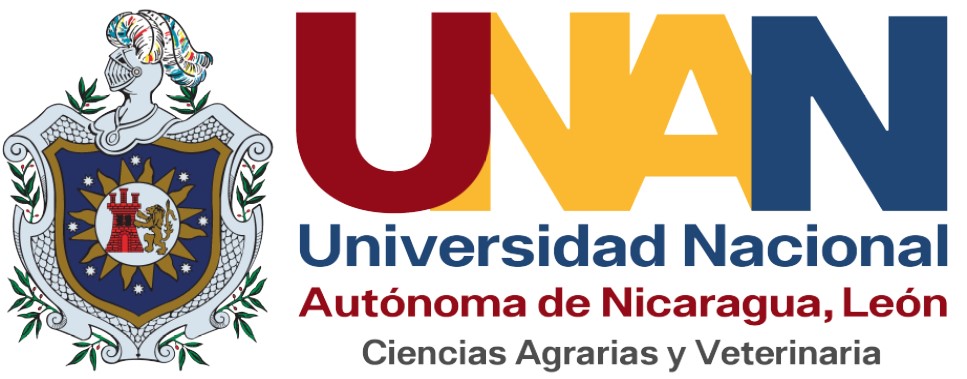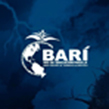Keratoconjunctivitis Sicca in canines of a neighborhood in Managua city
DOI:
https://doi.org/10.5377/ribcc.v6i12.10039Keywords:
Keratoconjuntivis Secca, Canines, Schirmer Test, NicaraguaAbstract
Keratoconjunctivitis Sicca in canines is one of the most underdiagnosed pathologies, a problem that is most accentuated in countries such as Nicaragua, where veterinary clinical practice is still incipient, the objective of this study was to determine the prevalence of Keratoconjunctivitis Sicca, applying the Schirmer test in 28 multi-breed dogs, which were studied during a day in a neighborhood of the city of Managua. Seven positive cases (25%, CI 95%: 7.17-4.82) of unilateral Keratoconjunctivitis Sicca were obtained, among them the Creole race 4/10, Pitbull 2/7, Chow Chow 1/2, while in the races Dóberman, French Poodle, Siberian Husky, Labrador, German Shepherd and Pekingese no positivity was found, sex was not a predisposing factor since in females they were positive 2/13 and in males 5/15 (p≥0.05), the average tear film in young dogs was 18.4 mm and in adults it was 21.0 mm showing significant difference (p = 0.049). This study highlights the need to include in the daily clinic the ophthalmological check-up in canines with complementary tests for the early detection of Keratoconjunctivitis Sicca.
Downloads
Metrics
References
Cabrera, A., Olaya Gaitan, L., & Escobar, L. (2017). - Dry in a canine keratoconjunctivitis. Case report. Revista electrónica de Veterinaria, 18, 1–9.
Dodi, P. L. (2015). Immune-mediated keratoconjunctivitis sicca in dogs: Current perspectives on management. Veterinary Medicine : Research and Reports, 6, 341–347. https://doi.org/10.2147/VMRR.S66705 PMid:30101119 PMCid:PMC6067592
Hartley, C., Williams, D. L., & Adams, V. J. (2006). Effect of age, gender, weight, and time of day on tear production in normal dogs. Veterinary Ophthalmology, 9(1), 53–57. https://doi.org/10.1111/j.1463-5224.2005.00437.x PMid:16409246
Huamán, Q., & Jackeline, L. (2014). Eficiencia de la prueba de Rosa de Bengala frente a la prueba lagrimal de Schirmer en el diagnóstico de Queratoconjuntivitis seca en caninos. http://repositorio.unc.edu.pe/handle/UNC/455
Instituto Nacional de Información de Desarrollo- INIDE de Nicaragua. (2010). http://www.inide.gob.ni/
Kaswan, R. L., Martin, C. L., & Dawe, D. L. (1985). Keratoconjunctivitis sicca: Immunological evaluation of 62 canine cases. American Journal of Veterinary Research, 46(2), 376–383.
Kaswan, R., Pappas, C., Wall, K., & Hirsh, S. G. (1998). Survey of Canine Tear Deficiency in Veterinary Practice. In D. A. Sullivan, D. A. Dartt, & M. A. Meneray (Eds.), Lacrimal Gland, Tear Film, and Dry Eye Syndromes 2: Basic Science and Clinical Relevance (pp. 931–939). Springer US. https://doi.org/10.1007/978-1-4615-5359-5_132 PMid:9634990
Matheis, F. L., Walser-Reinhardt, L., & Spiess, B. M. (2012). Canine neurogenic Keratoconjunctivitis sicca: 11 cases (2006-2010). Veterinary Ophthalmology, 15(4), 288–290. https://doi.org/10.1111/j.1463-5224.2011.00968.x PMid:22051024
Miyasaka, K., Kazama, Y., Iwashita, H., Wakaiki, S., & Saito, A. (2019). A novel strip meniscometry method for measuring aqueous tear volume in dogs: Clinical correlations with the Schirmer tear and phenol red thread tests. Veterinary Ophthalmology, 22(6), 864–871. https://doi.org/10.1111/vop.12664 PMid:30900351
Moreno H., J., Fernández A., V., Chipayo G., Y., & Crespo P., A. (2009). Patrones referenciales de producción lacrimal en caninos, empleando la prueba de Schirmer, en una clínica de Lima Metropolitana. Revista de Investigaciones Veterinarias Del Perú, 20(2), 249–253. https://doi.org/10.15381/rivep.v20i2.618
Vuele, C., & Gonzalo, S. (2015). Prevalencia de queratoconjuntivitis seca en perros en la ciudad de Machala. http://repositorio.utmachala.edu.ec/handle/48000/2696
Xu, K. P., Yagi, Y., & Tsubota, K. (1996). Decrease in corneal sensitivity and change in tear function in dry eye. Cornea, 15(3), 235–239. https://doi.org/10.1097/00003226-199605000-00002
Downloads
Published
How to Cite
Issue
Section
License
Copyright (c) 2020 Ibero-american JournalL of Bioeconomy and Climate Change e-ISSN 2410-7980

This work is licensed under a Creative Commons Attribution-NonCommercial-ShareAlike 4.0 International License.
Copyright © 2025 Rev. iberoam. bioecon. climate change. National Autonomous University of Nicaragua León (UNAN-León), Knowledge Area of Agrarian and Veterinary Sciences / Specific Area of Agroecology and Agribusiness / Center for Research in Agrarian Sciencies. Academic Directorate. Research Department. Publication and scientific events Unit.












 EDITORIAL
EDITORIAL e-ISSN
e-ISSN


 COPYRIGHT
COPYRIGHT This work is licensed under a Licencia Internacional
This work is licensed under a Licencia Internacional 












